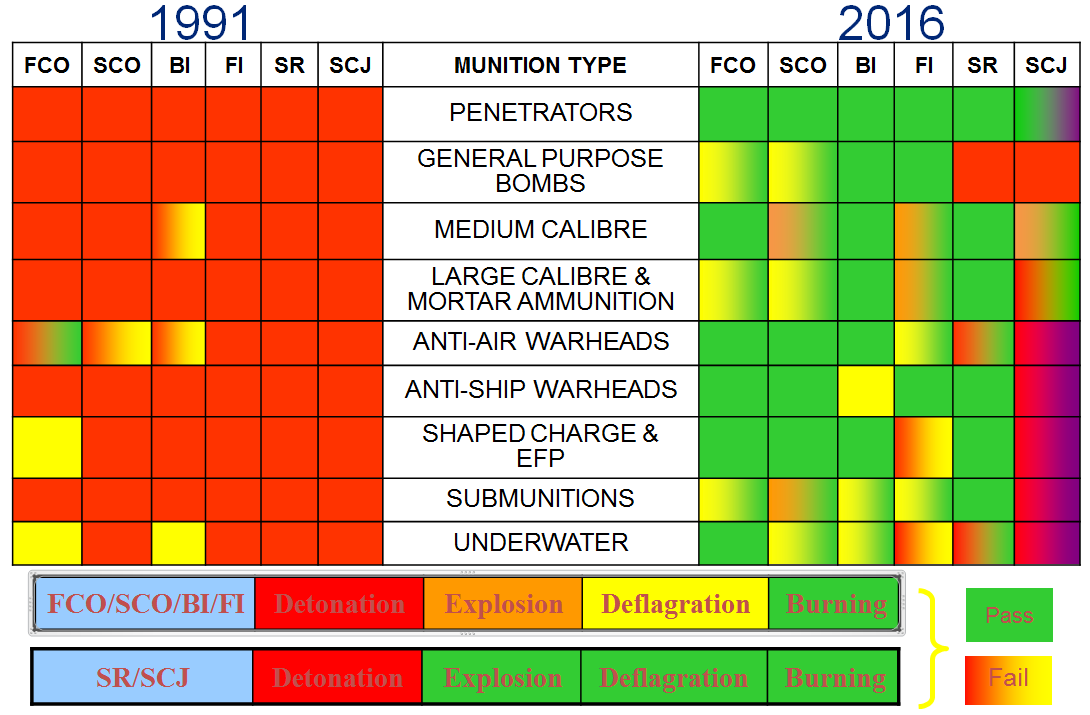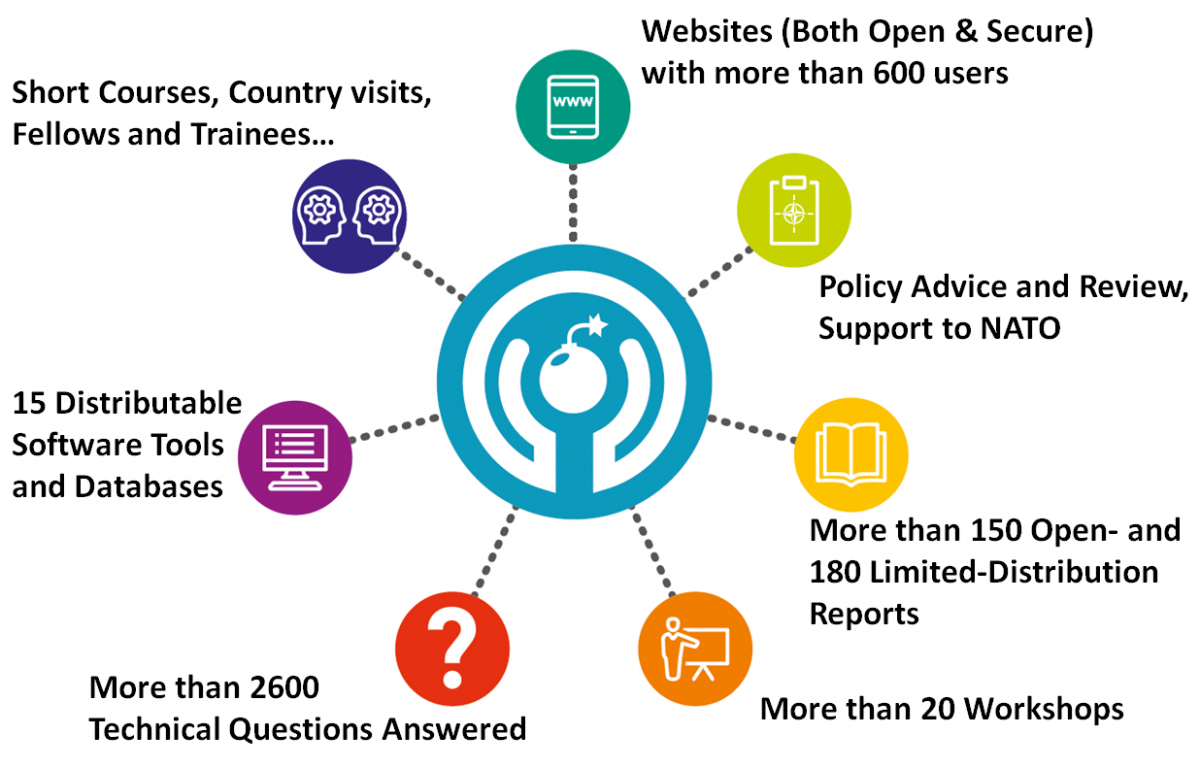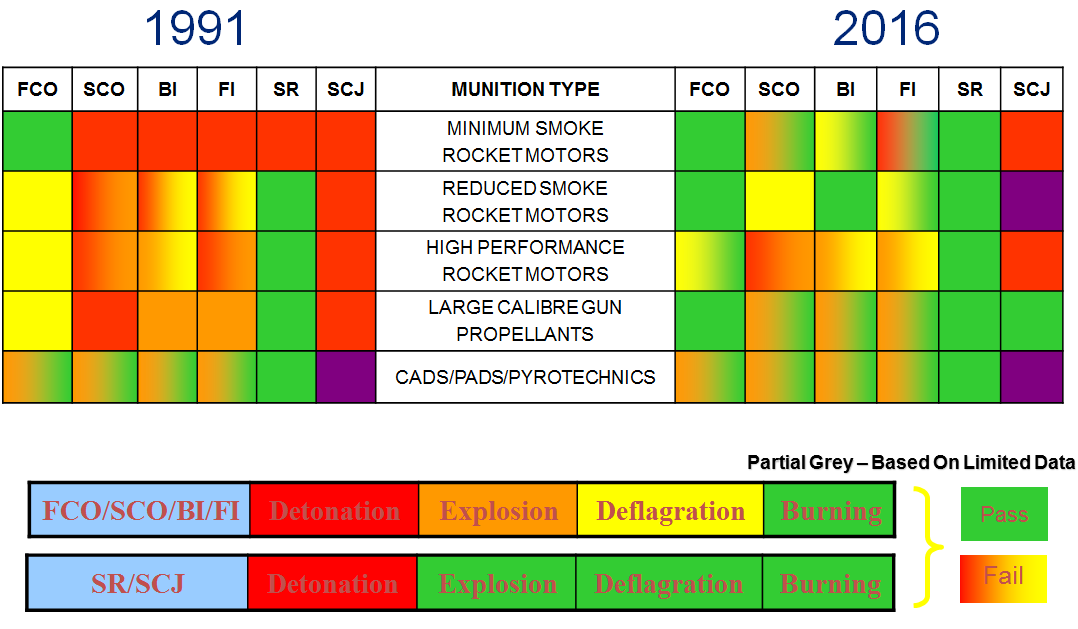MSIAC - Reflection on 25 Years Supporting the Munition Safety Community
Over the years MSIAC has played a central role in facilitating member nation’s efforts to design, develop, procure, and use safer munitions.
MSIAC was created after a number of horrific munition accidents in the 1960s and 70s, particularly those aboard USS Forestal and USS Enterprise, exposed the need for munitions with reduced vulnerability to so-called “unplanned stimuli” such as fire, exploding bombs, or impacts from other weapons (bullets, fragments, etc.) There was an understanding that munitions are inherently dangerous, but that safety precepts and principles applied at the time had failed to provide an acceptable level of protection to those exposed to risk. Indeed, there became a strong desire within some national policy makers and safety organizations to drive down this risk, and create munitions that were insensitive to any external forces, and would only function when used in their intended mode. Hence the history of MSIAC is linked to the history of the insensitive munitions, or IM, effort. Beauregard (The History of Insensitive Munitions” By RL Beauregard, http://www.insensitivemunitions.org/) has put together an excellent history of IM which is available on the Internet.
MSIAC was first known as NIMIC, the NATO IM Information Centre. NIMIC was notionally conceived as early as 1984 from discussions within the NATO AC/310 group, responsible for policy on safety and suitability for service of conventional munitions. This group reported to the Conference of National Armament Directors (CNAD). In order to progress development of IM, it was agreed to pull together the capabilities and knowledge of various countries to address the technical challenges. Further, as this was an issue facing many NATO nations, it would impact interoperability, an over-arching goal of the NATO Alliance. These discussions culminated in an AC/310-sponsored workshop held in 1986 at which seventy representatives from various governments discussed and agreed the need to establish an IM information centre under NATO.
As noted by Beauregard, US Navy leadership recognised this need and were a key player in efforts to establish NIMIC. Indeed, the US Navy took responsibility for drafting the MOU establishing NIMIC as a pilot back in 1988.
“The NIMIC will enhance the ability to achieve the U.S. desire for equality of conventional munitions within the alliance in the area of insensitive munitions program requirements, thus improving their inter-operability potential, and overall safety concerns in transportation and storage. …The Navy agrees to provide funding…for the establishment of the NIMIC…” (OPNAV ltr Ser. 35/OU587461 of 17 May 1990; Subject: NATO Insensitive Munitions Information Center).
Initially only six NATO members were interested in participating. France, the Netherlands, Norway, the United Kingdom, and the United States initially signed the MOU with Canada joining slightly later in 1989. Participating nations contributed funds and technical personnel for the project and an office was established at the Johns Hopkins Applied Physics Laboratory, in Columbia, Maryland, USA. Governance was provided directly by the member nations via a steering committee headed by an elected chairperson.
Pilot NIMIC was a success and in 1991 it transitioned to its current home at NATO Headquarters in Brussels. NIMIC grew in membership adding five more nations: Australia, Italy, Norway, Sweden, and Finland.
In 2003, member nations realised that the development and fielding of IM was maturing and becoming part of the safety design and management process. It was agreed to broaden the project office’s scope to cover lifecycle ammunition safety. The transition was managed over a two year period establishing MSIAC in 2005. The scope matched well with the objectives of the newly formed CNAD Ammunition Safety Group (CASG, also called AC/326) and a closer working relationship developed between the two groups with MSIAC able to provide support on a case by case basis (as agreed by MSIAC’s steering committee).
MSIAC has expanded its membership further with Germany (2005) and Belgium (2015), and Poland is currently in the process of joining with membership ratification expected in 2017.
Technical Mission
The MSIAC project operates today in a very similar manner to how it did 25 years ago. Its scope is to collate, review, and analyse munitions safety-related information across the whole life cycle of munitions. IM is a key focus, with IM technologies continuing to be key drivers to enhanced weapons safety.
The MSIAC steering committee and project manager use the strategic plan to define the scope of the yearly work plan. This is then approved through the steering committee with individual work elements developed for the following enabling activities:
- Requirements. Capture and analyse MSIAC member nations’ and relevant stakeholders’ munitions safety requirements;
- Knowledge. Develop, synthesize, and maintain knowledge and understanding to enhance munitions safety;
- Policy. Define, harmonize, improve, and promote policies for munitions safety;
- Delivery. Promote munitions safety and execute MSIAC’s mission.
MSIAC’s products and services are available in a number of different ways. Some are engaged via national practitioners through the secure web environment, some are collaborative engagements of many experts, and others are focused, targeted engagements at the organisational level. The schematic provides a summary of these, all centred about the fundamental MSIAC goal to support munitions safety.
I will highlight the history of just two of these areas here: answering technical questions, and hosting technical workshops.
Technical Questions
Answering technical questions continues to be one of MSIAC’s most visible means of supporting the munitions community in our member nations. Over the years NIMIC and MSIAC have answered more than 2600 questions which cover a wide range of subjects and complexities.
The first question asked of NIMIC in October 1989 requested information on: National IM requirements, the IM tests used, components critical in meeting IM requirements, and the efforts currently underway to address IM deficiencies. That answer reveals how much progress has been made by the community:
- Only the US had an IM policy.
- On IM testing – Only national procedures existed and there were few systems which had been tested at that time (perhaps with the exception of the US as detailed in a later question).
- Many of the concepts to improve IM response were known in 1989 but remained just that; few examples of where the concepts had been applied were known.
A quick review of the situation today reveals a very different picture: NATO IM policy and tests standards are mature, and MSIAC tools and databases contain many IM success stories. Many of the concepts known in 1989 have been successfully implemented and fielded and the benefits have been realised. To illustrate this point we have put together two stop light charts to indicate progress from 1991. This is an MSIAC TSO consensus assessment based on fielded systems in 2016 for warheads and propulsion/pyrotechnics.

Technical Workshops
MSIAC facilitates the advancement of knowledge and policy though organising meetings, workshops, and seminars on IM and munition safety related issues. Workshops constitute a major effort for MSIAC as, in addition to organizing the venue and logistics, the MSIAC technical team prepares much of the technical background on which to base the discussions before the event, as well as thorough documentation and analysis afterward.
There have been more than 25 workshops or major technical meetings since NIMIC began in 1991. The workshops have been within three topical areas: IM reaction mechanisms and testing, IM technology and insertion, and general munitions safety. A trend becomes evident in that early workshops focused on individual threat stimuli. These meetings served to increase our understanding of the reaction mechanisms so that we could design munitions with reduced vulnerability to threats giving lower levels of reaction violence. More recent workshops have focused on topics relevant to IM implementation, and are linked to the increasing availability of IM technology.
The Future
MSIAC is preparing for the move the new NATO headquarters building in early 2017. Efforts will be taken to minimise the impact to MSIAC users, however, given that our data centre will be moving, we expect some down time for the secure web environment.
MSIAC is currently updating its founding MOU. Since 1991, changes in the project’s scope and addition of new members have been enacted through amendments. The Steering Committee agreed last year to update the MOU and bring it in line with current objectives, language, and policy. This provides member nations with an opportunity to review the current scope of MSIAC and introduce changes where necessary. Three areas were identified where support should be expanded:
- Range safety. There is a gap in expertise that should be addressed in the near future. Range safety specialists will be engaged to explore possibilities for working more closely with this community.
- Actual environmental exposure. A better understanding and characterization of the actual exposure of munitions during their lifecycle. This is linked to the NATO Integrated Munitions Health Management (IMHM) Smart Defence Initiative (SDI) which MSIAC has been requested to support.
- Supporting modeling and simulation efforts in general, and combustion modeling in particular was noted as an area requiring attention.
In Closing
Over the last 25 years, significant progress has been made with respect to munitions safety aims, particularly with IM development and fielding. MSIAC’s role in assisting nations with their munition safety requirements and goals has given rise to a diverse range of products and services which continue to be developed and exploited.
It is important to realise that MSIAC facilitates munition safety improvements and this works because of a successful partnership with our member nations who have a strong safety culture, and requirements to build and continually improve munition safety.
The efforts of the munitions safety community are ultimately directed toward keeping the warfighter and others handling explosives and munitions safe. For MSIAC member nations this equates to almost five million uniformed service members throughout our 13 member nations. That is no small challenge, and unfortunately accidents and incidents still occur which serve to remind us why the community takes this responsibility seriously.




